|
Me Sahyadri |
|
August 2016 |
|
Volume 3, number 12 |
|
|
Please use minimum 1280 pixel horizontal screen resolution for viewing. Please be patient while all the images in webpage are loaded. Please do not use the images for any commercial use without permission. Text in Marathi and English is not exact translation. Please give sufficient time to allow the photographs to load. Special thanks to all those who helped me during the compilation and for the help and guidance during the activity. |
|
|
|
|
देशाची आर्थिक प्रगती व्हावी असे सर्व नागरिकांना वाटणे सहाजिक आहे. अर्थकारणामुळे मिळणारा रोजगार, समृद्धी यासाठी सर्वांनाच आर्थिक प्रगती हवी हवीशी वाटते. आर्थिक प्रगती होताना, त्याचा दिर्घकाळात समाजावर, निसर्गावर, वातावरणावर दुष्परिणाम होणार नाही याची काळजी घेणे महत्वाचे आहे. मनुष्याच्या भावी पिढ्यांना पाणी, शुद्ध हवा, योग्य वातावरण मिळत रहावे अशी भावना मनात रुजणे महत्वाचे आहे. वाढत्या आर्थिक प्रगतीमुळे नैसर्गिक संपदेवर ताण येतो. प्रगतीसाठी प्रदुषण होते. जंगले, माळराने, व इतर अधिवास नष्ट होतात. वसुंधरेवर रहाणाऱ्या इतर जीवांचा मात्र मनुष्य फारसा विचार करत नाही. आर्थिक प्रगती करताना, मनुष्य निसर्गाची हानी करत आहे. मुळताच माणसाला निसर्गाचे महत्व समजणे हे सध्याच्या आपल्या प्रगत जीवनशैली मुळे अवघड झाले आहे. आर्थिक प्रगती, समाजाची प्रगती व निसर्ग संपदेची निगा, यांचा समतोल राखणे काळाची गरज आहे.
सह्याद्री (पश्चिम घाट) हा एक नैसर्गिक संपदेचा, वैविध्यतेचा, भौगोलिक व ऐतिहासिक ठेवा आहे. वाढत्या मानवी अतिक्रमणाचा, सह्याद्रीच्या विविध घटकांवर होणारा दुष्परिणाम भविष्यात आपल्यालाच धोका निर्माण करेल, यात शंका नाही. शुद्ध पाणी, हवा व उर्जा, भावी पिढीला मिळण्यासाठी, नंद्यांचे उगम असलेला सह्याद्री व त्याभागातील जंगले टिकवणे महत्वाचे आहे. सह्याद्रीच्या महत्वाच्या घटकांचे महत्व छायाचित्रांद्वारे प्रकट करण्याचा मी येथे प्रयत्न केला आहे. येथील पक्षी, प्राणी, वनस्पती, अधिवास, किल्ले व लेणी अशा विविध विषयांबद्दल आपण समजुन घेऊ.
|
|
As the economic development has taken the center stage, the balance between the environmental sustenance and socio economic development will be under the scanner. As most experts with balanced views have proclaimed, Indian wildlife and ecological system sustenance will be under threat, unless precautions are taken with the help of appropriate research and long term national interests. As we encounter the economic development, many habitats which indirectly or directly help sustainable development will be damaged. The awareness to gauge the success by sustainable development and not by year to year growth is a distant dream any environmentalist will assume in current scenario.
Western ghats, or Sahyadri as we all call it as, is a treasure trove of spectacular landscapes, biodiversity, flora, fauna, some amazing geological wonders and man made monuments. With the increasing pressure from human encroachment, all these elements are under stress and in turn are under depletion. Western ghats should be left untouched by human beings, to protect their future generations from getting short of resources, such as water, energy and clean air. The important elements of western ghats, which need protection are highlighted in the new version of Photo journal, Me Sahyadri Magazine. The current issue has few of the lesser flora from the north Western Ghats.
|
|
|
| |
 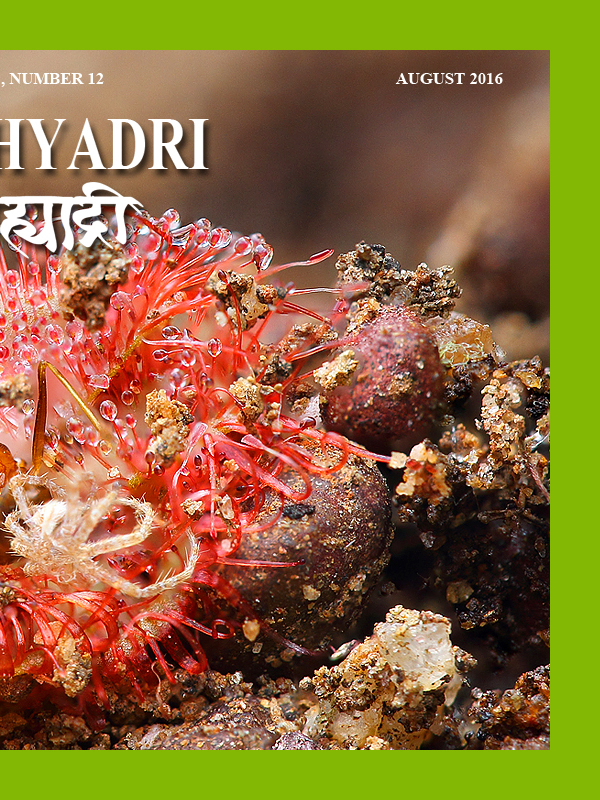
|
| |
| Me Sahyadri – August 2016
|
| |
|
|
| |
  |
| The banner has been published here to improve the awareness of the trekkers and tourists visiting the various mountain forts, mountains in north western ghats. Please avoid accidents, by following good outdoor ethics such as no swimming in cisterns at mountain forts, no rock climbing without proper technical equipment and expertise. Please do not adventure, trek with any group or individually without understanding the risks associated. The frequency of the solo trekker fatalities have increased recently. Please strictly avoid solo treks. Please also avoid treks to mountains in large commercial groups, as it leads to damage to biodiversity of these high elevation ecological islands. Please respect the wildlife and biodiversity of the region. This has become more important as the ever increasing human interference is leading to severe damage to fragile ecosystems. Please be aware of the wildlife and biodiversity of the mountains before visiting these mountains. Please follow outdoor ethics. Follow ASI and Forest department rules. The concept of use of symbols for outdoor ethics was conceived and designed by "Sahyadri Trekker Bloggers Group". |
| |
|
|
| |
  |
| 1. Habenaria plantaginea / Plantaginorchis plantaginea ,कदली हबेअमरी, Hill slopes, north western ghats, India |
| |
|
|
| |
 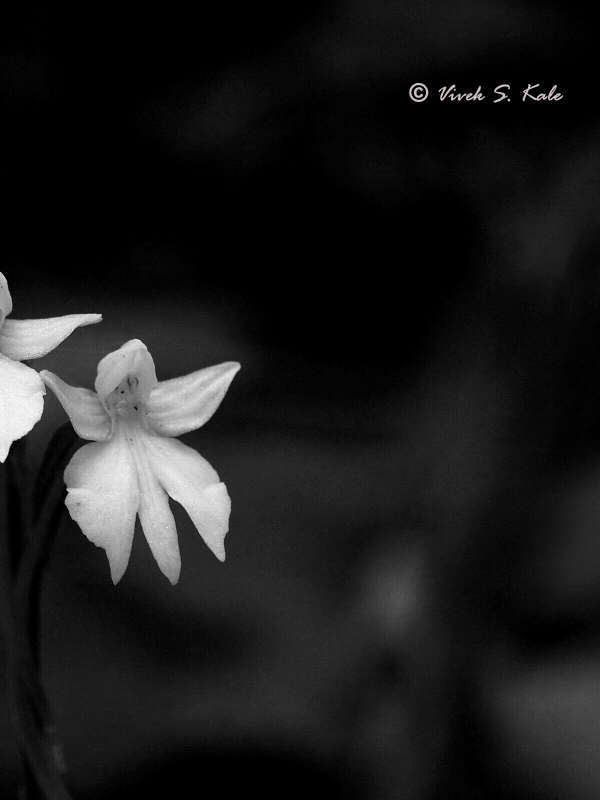
|
| |
| 2. Habenaria plantaginea / Plantaginorchis plantaginea ,कदली हबेअमरी, Hill slopes, north western ghats, India |
| |
|
|
| |
 
|
| |
| 3. Habenaria plantaginea / Plantaginorchis plantaginea ,कदली हबेअमरी, Hill slopes, north western ghats, India
|
| |
|
|
कदली हबेअमरी (हबेनरिया प्लॅन्टेजिनिआ) नावाचे एक सुंदर ओर्किड आपल्याला सह्याद्रीत पहावयास मिळते. डोंगर उतारावर जंगलातल्या सावलीत दिसणारी लहान वनस्पती आपल्याला सप्टेंबर ते डिसेंबर या काळात फुललेली दिसते. याची उंची २०-३० से मी असते.
|
|
Habenaria plantaginea / Plantaginorchis plantaginea , (कदली हबेअमरी ) is a small herb seen on the hill slopes in undergrowth in western ghats. The species is native to India. The plant is a about 20-30 cm in height. It is seen in September to December season. It is orchid, with a distinct spur.
|
|
|
| |
 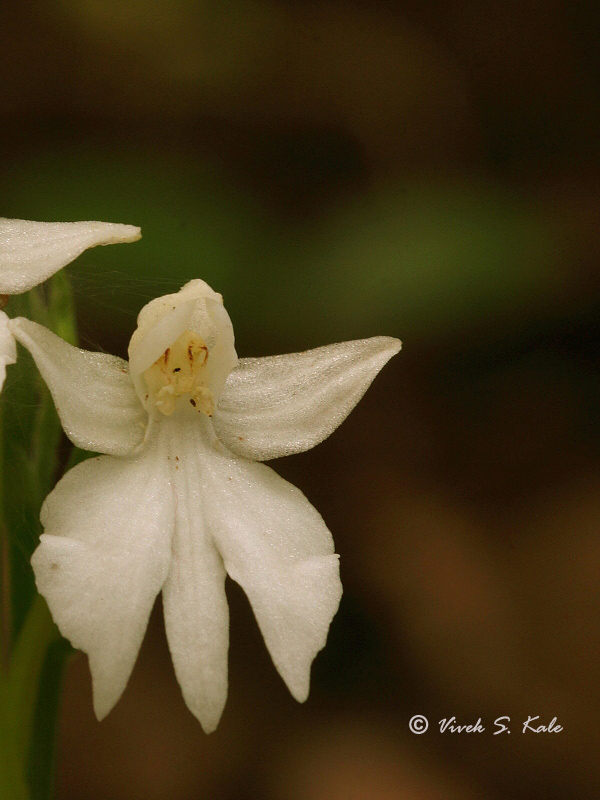
|
| |
| 4. Habenaria plantaginea / Plantaginorchis plantaginea ,कदली हबेअमरी, Hill slopes, north western ghats, India
|
| |
|
|
| |
 
|
| |
| 5. Habenaria plantaginea / Plantaginorchis plantaginea ,कदली हबेअमरी, Hill slopes, north western ghats, India |
| |
|
|
| |
 
|
| |
| 6. Habenaria plantaginea / Plantaginorchis plantaginea ,कदली हबेअमरी, Hill slopes, north western ghats, India
|
| |
|
|
| |
 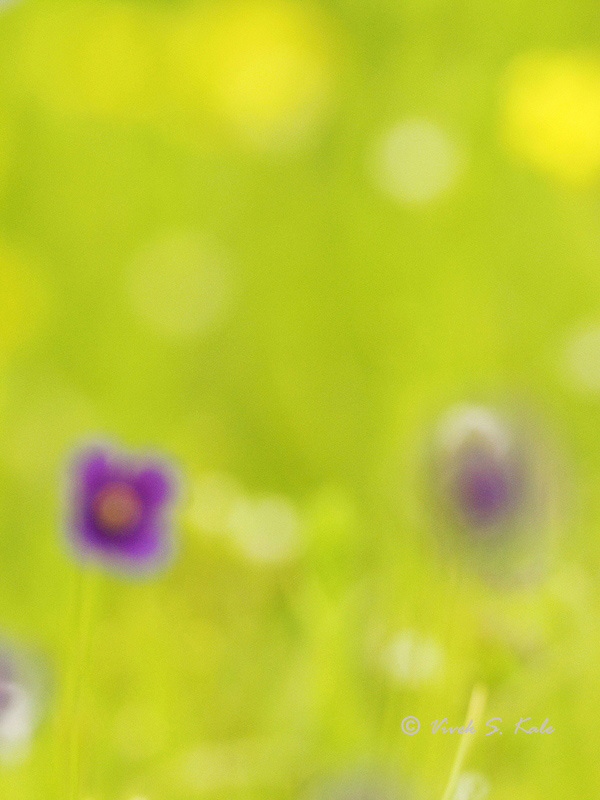
|
| |
| 7. Exacum lawii, lateritic plateau, north western ghats, India
|
| |
|
|
| |
 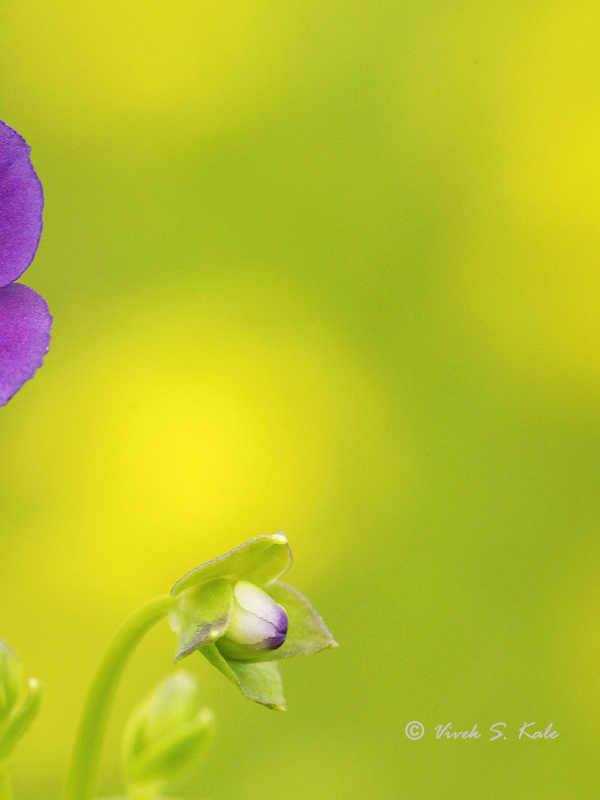
|
| |
| 8. Exacum lawii, lateritic plateau, north western ghats, India
|
| |
|
|
| |
 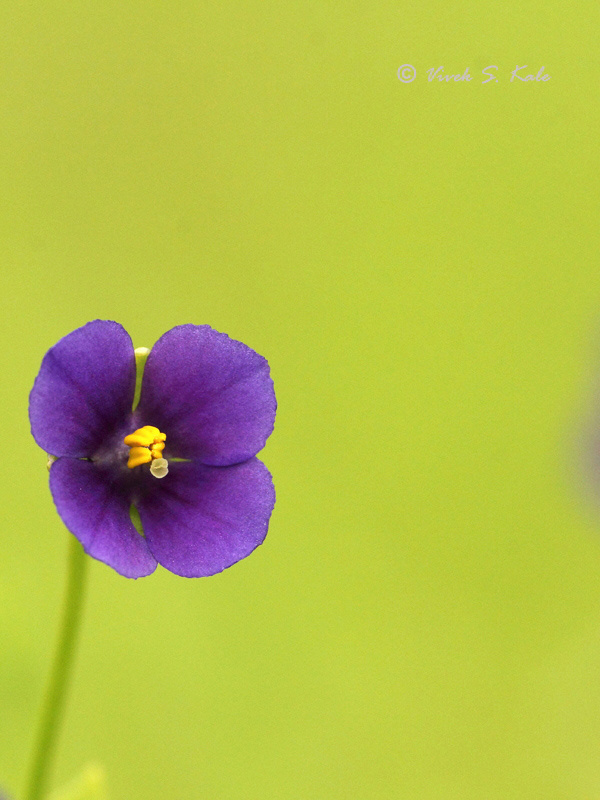
|
| |
| 9. Exacum lawii, lateritic plateau, north western ghats, India
|
| |
|
|
एक्झॅकम लावी एक लहान वनस्पती असुन आपल्याला पावसाळ्यात हि वनस्पती सह्याद्रीत दिसते. सड़्याच्या अथवा बेसाल्टच्या पठारांवर हि वनस्पती दिसते. फुले अत्यंत लहान असतात. त्यांचा जांभळा रंग उठावदार असतो. त्याला चार पाकळ्या असतात. त्याला लहान चिरायत असे म्हणतात.
|
|
Exacum lawii is a small herb seen on the lateritic or basalt plateaus in western ghats. The flowers are seen in August and September. The plant is very tiny with violet colored tiny flowers which have four petals.
|
|
|
| |
 
|
| |
| 10. Exacum lawii, lateritic plateau, north western ghats, India
|
| |
|
|
| |
 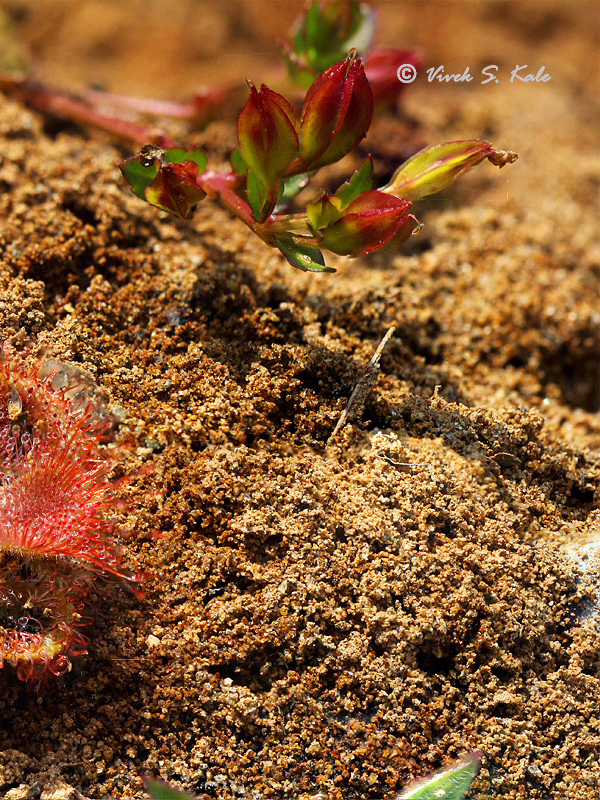
|
| |
| 11. Drosera Burmannii, Karnataka, Western ghats, India
|
| |
|
|
समजा आपण एक उडणारा छोटा किडा आहोत. गवताच्या गालिच्यावरुन भरारी मारत फुलांमधील रस गोळा करत उडताना अचानक, तुम्हाला आकर्षक चकाकणारे मध, द्रुष्टित येते. मध आकर्षक मध चव घेण्यास खुणावते. अत्यानंदाने तुम्ही त्या दिशेने झेपावता. जवळ जाताच मन्त्रमुग्ध करणारा सुगन्ध तुम्हास बेहोश करतो. स्वर्गच जणु. एवढे दिवस आपणास हा स्वर्ग का सापडला नाही ? असा एक खुळा प्रश्न पडतो. मोह न आवरता तुम्ही त्या मधुकणांवर उतरता. मध चवीष्ट वाटते. घट्ट चिकट मधात तुमचा एक पाय अडकतो. पाय ओढता ओढता, दुसरा पाय चिकटतो. काही कळण्याच्या आतच, तिसरा व चौथा पाय अडकतो. गोड मधात उगाच उतरलो असे वाटू लागते. जीवाची कासावीस सुरु होते. धडपडीत पंखसुद्धा मधात फसतात. थोड्या वेळात वनस्पती तुम्हाला घेरते. अंगात जळजळ सुरु होते. जीवंत रहाण्याची आशा मावळते. तुम्ही जर नशिबवान असाल तर गुदमरुन लवकर मराल पण नसाल तर ताटकळत वेदना सहन करत मराल. हि आहे घातक दवबिंदू वनस्पतीची मायावी दुनिया. वरिल घटनाक्रम एखाद्या किड्या मुंग्यांच्या भयाणपटातील आहे असे वाटत असले तरी हि सत्यपरिस्थिती आहे. |
|
Drosera burmannii ( दवबिंदूं ) is a small tropical sundew. It was first described by Johannes Burman 18th Century botanist, but the species was not formally published until 1794 when Martin Vahl named it in honor of Burman as Drosera burmanni. It is one of the compact species in the carnivorous plant genus Drosera of size, only 20-25 mm in diameter (roughly of the size of one Indian rupee coin). Drosera burmannii ( दवबिंदूं )traps the insects very fast and its leaves can curl around the prey insect in few seconds, compared to the minutes or hours it takes other sundews to trap the prey. Drosera burmannii is an herb that produces short stems and leaves in a rosette. (a rosette is a circular arrangement of leaves, with all the leaves at a particular height.) Tiny creamy white flowers are produced in groups on 6–15 cm tall racemose inflorescences, (An inflorescence is a group or cluster of flowers arranged on a stem that is composed of a main branch.).
|
|
|
| |
 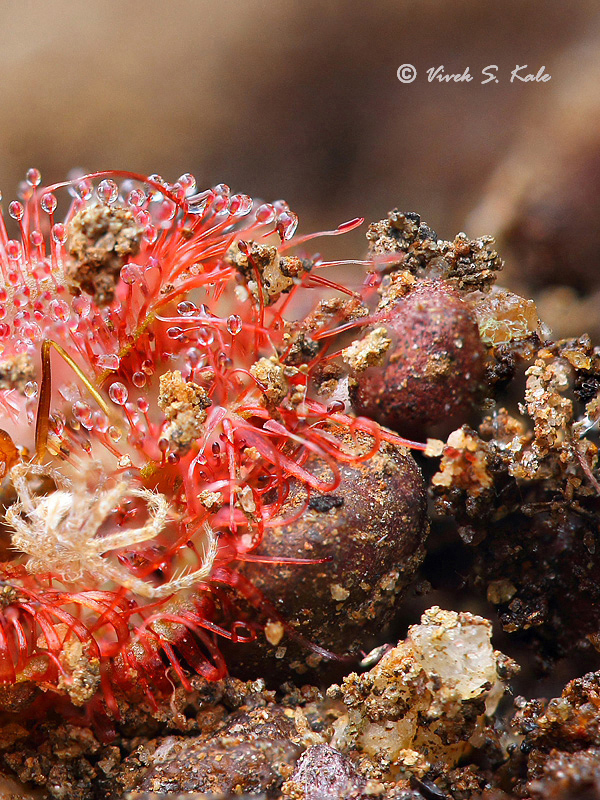
|
| |
| 12. Drosera Burmannii, Karnataka, Western ghats, India
|
| |
|
|
The plant flowers in September to December duration. The plant has long tentacles on its leaves. These stalks are tipped with glands which are often brightly attractive red colored. The glands exude attractive nectar, adhesive compounds, and digestive enzymes. Insects that land on the leaves stick fast and are digested. Nearby glandular tentacles are stimulated and also adhere to the insect, the entire leaf coils around the prey.
The tentacles can bend in any direction. But when a prey is caught on a leaf, all the tentacles know the direction to bend towards. In Drosera burmannii, the tentacle motion is faster. Some of the glands can bend 180 degree in just tens of seconds. The 'nectar' on the end of the glands is sticky liquid glue which is capable of ensnaring an insect larger than the leaf itself.
Once prey becomes stuck on one of these blobs of glue, any frantic struggling will simply cause it to come into further contact with neighboring glands, pinning the animal to the leaf. The plant has retaining glands which fold from the outside of the leaf in towards the centre to help to restrain the insect.
. |
|
The leaf itself curls around the victim, thus ensuring a meal.
For most insects, death is caused by suffocation since the breathing holes on the side of the insect soon become clogged with mucilage. Once prey is pinned down, the leaf secretes digestive fluids from sessile glands along the body of the leaf. These work on reducing the fleshy internal part of the insect into a nutrient soup which is subsequently absorbed by the plant.
Once digestion and absorption is complete, the leaf returns to its ready state, leaving to dried exoskeleton to be washed away by rainfall, or simply left as a macabre warning to other insects.Drosera burmannii cannot obtain nitrates from soil due to the absence of nitrate reeducates and other essential enzymes for absorbing them.It obtains nutrients solely from the capture of prey insects. Basically when it comes to carnivorous plants, the lower the quantity of soil nutrients and the higher the quotient of sunlight and rainfall, the greater their reliance on carnivory. Accordingly most carnivorous plants grow where sunlight and water are plentiful and nutrients such as nitrates and phosphates are low.
|
|
|
| |
 
|
| |
| 13. Drosera Burmannii, Karnataka, Western ghats, India
|
| |
|
|
| |
 
|
| |
| 14. Drosera Burmannii, Karnataka, Western ghats, India
|
| |
|
|
| |
 
|
| |
| 15. Drosera Burmannii, Karnataka, Western ghats, India
|
| |
|
|
| |
 
|
| |
| 16. Drosera Burmannii, Karnataka, Western ghats, India
|
| |
|
|
| |
 
|
| |
| 17. Drosera Burmannii, Karnataka, Western ghats, India
|
| |
|
|
| |
 
|
| |
| Thank You |
| |
|
|
| |
|







































